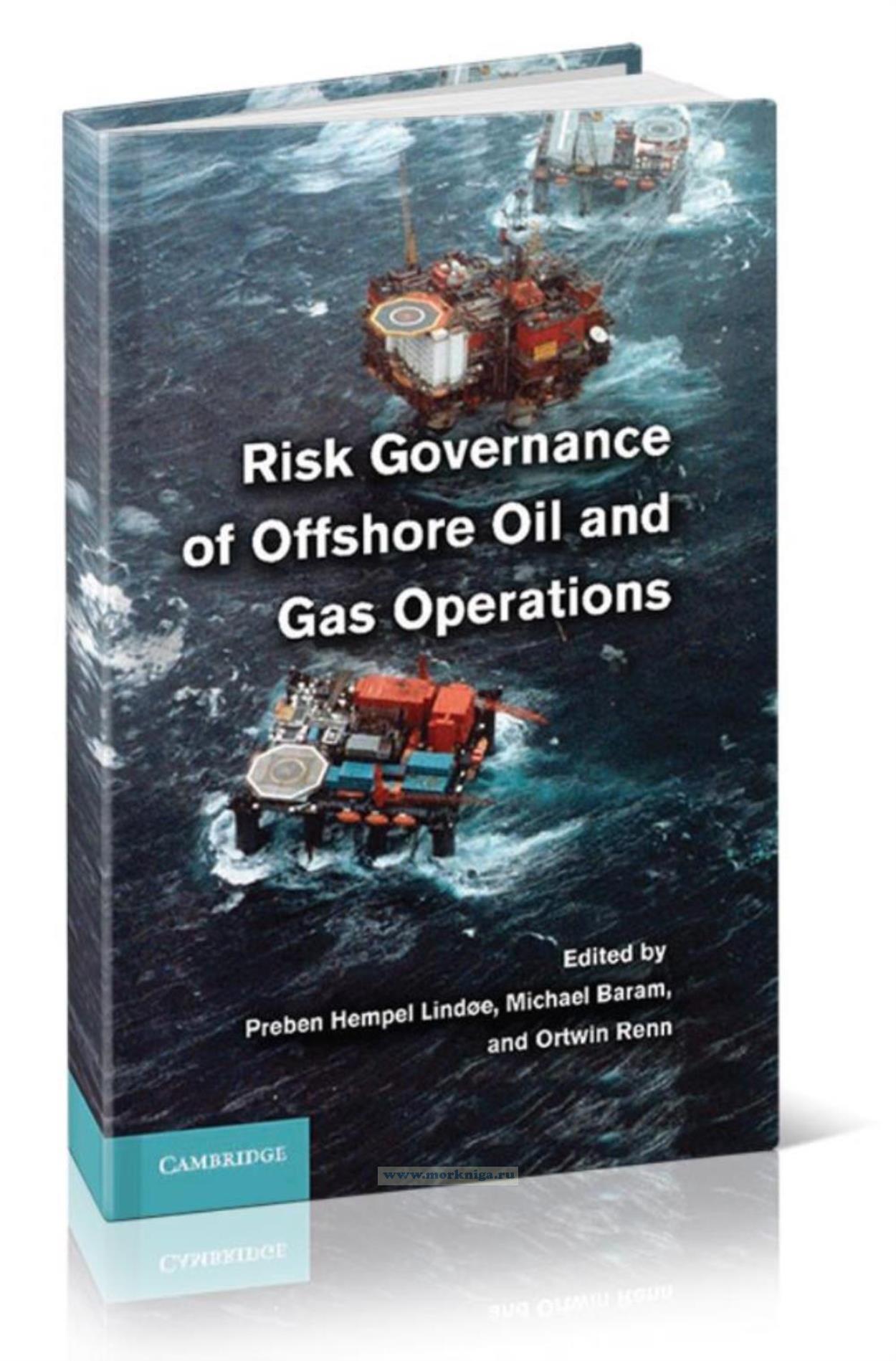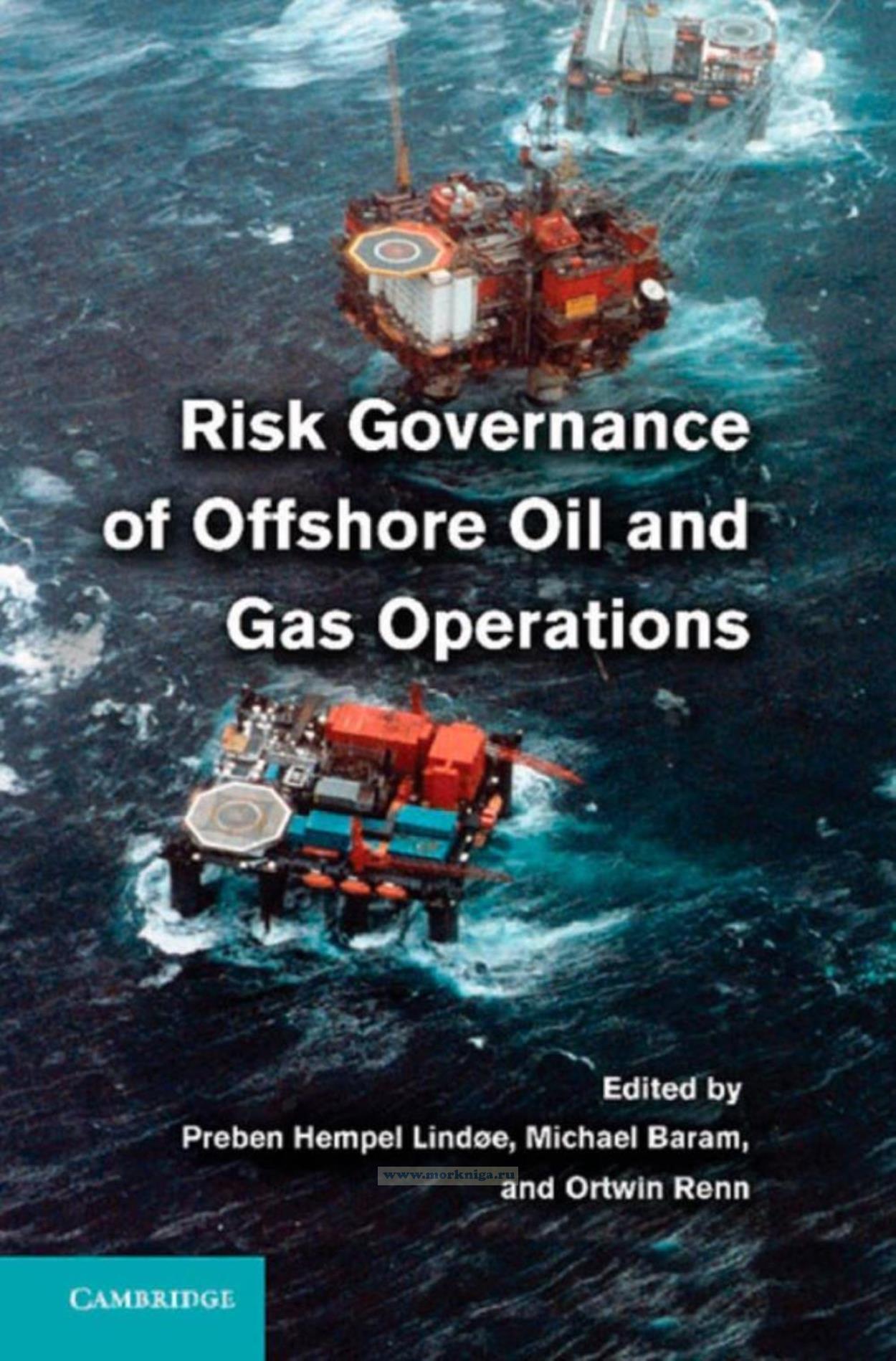Сб с 10 до 16
Risk Governance of Offshore Oil and Gas Operations/Управление рисками морских нефтегазовых проектов
Книга на английском языке.
This book evaluates and compares risk regulation and safety management for offshore oil and gas operations in the United States, United Kingdom, Norway, and Australia. It provides an interdisciplinary approach with legal, technological, and sociological perspectives on their efforts to assess and prevent major accidents and improve safety performance offshore. Presented in three parts, the volume begins with a review of the technical, legal, behavioral, and sociological factors involved in designing, implementing, and enforcing a regulatory regime for industrial safety. It then evaluates the four regulatory regimes that encompass the cultural, legal, and other contextual factors that influence their design and implementation, along with their reliance on industrial expertise and standards and the use of performance indicators. The final section presents an assessment of the resilience of the Norwegian regime and its capacity to keep pace with new technologies and emerging risks, respond to near miss incidents, encourage safety culture, incorporate vested rights of labor, and perform inspection and self-audit functions. This book is highly relevant for those in government, business, academia, and elsewhere in civil society who are involved in offshore safety issues, including regulatory authorities and industrial safety professionals.
Contents
List of Contributors page
Preface
I ntroduction: In Search of Robustness
Michael Baram, Preben Hempel Lindoe, and Ortwin Renn
I.1 Offshore Safety
I.2 The Quest for Robust Regulation
I.3 This Book
Part I Regulatory Frameworks and Concepts
1 A Generic Model for Risk Governance: Concept and Application to Technological Installations
Ortwin Renn
1.1 Introduction
1.2 Pre-Estimation
1.3 Interdisciplinary Risk Estimation
1.4 Risk Evaluation
1.5 Risk Management
1.6 Risk Communication and Participation
1.7 Conclusions
2 Modes of Risk Regulation for Prevention of Major Industrial Accidents
Michael Baram and Preben Hempel Lindoe
2.1 Introduction
2.2 Social Control of Hazardous Industrial Activities
2.3 Modes of Regulation for Preventing Major Accidents
2.4 Legitimacy, Accountability, and Legality
2.5 Conclusion
3 Values and Norms - A Basis for a Safety Culture
Kathryn Mearns
3.1 Introduction
3.2 Values, Norms, Attitudes, and Beliefs
3.3 The Role of Values and Norms in Safety Culture
3.4 Societal Culture: The Bedrock of Safety Culture?
3.5 The Role of National Culture on Safety Culture and Safety Performance
3.6 National Culture and Safety in Other Industries
3.7 National Culture and Safety Culture in the Oil and Gas Industry
3.8 National Culture, Safety Climate, and Safety Performance
3.9 Other Influences on Safety Culture
3.10 Safety Culture in Air Traffic Management (ATM): Are There Lessons to Be Learned?
3.11 Conclusion
4 Optimising Offshore Health and Safety Inspections: How the Markets Could Help
Emre Usenmez
4.1 Introduction
4.2 Scarce Resources
4.3 Recurring Theme
4.4 Transferring Responsibility
4.5 Optimisation of Decision Making
4.6 Group-Based Forecasting Methods
4.7 Drawbacks
4.8 The Five Methods and Risk Management
4.9 Final Comments
Part II Regulatory Regimes: Norway, United Kingdom, United States, and Australia
5 Safety Regulation on the Norwegian Continental Shelf
Knut Kaasen
5.1 Introduction
5.2 The Problem of Jurisdiction
5.3 State Safety Management: The Structure of the Safety Regulation
5.4 The 2010 Framework Regulations and the Pursuant Regulations
5.5 State Safety Control
5.6 Industry Safety Management
5.7 The Link between State and Industry Safety Management
6 Health and Safety Regulation on the UK Continental Shelf: Evolution and Future Prospects
John Paterson
6.1 Introduction
6.2 The Evolution of Offshore Health and Safety Regulation on the United Kingdom Continental Shelf
6.3 Experience with the Safety Case Approach
6.4 Macondo and the Possibility of a New European Directive
6.5 Conclusion
7 T he U.S. Regulatory Regime for Preventing Major Accidents in Offshore Operations
Michael Baram
7.1 Introduction
7.2 Context
7.3 Risks
7.4 Legal Framework
7.5 Regulation
7.6 New Regime
7.7 Conclusion
8 A New Policy Direction in Australian Offshore Safety Regulation
Jan Hayes
8.1 Introduction
8.2 The Montara Blowout
8.3 Organisational Factors
8.4 Controlling the Potential for Accidents
8.5 Incorporating Organisational Issues into Offshore Safety Legislation
8.6 Preventing Another Montara
8.7 Conclusions
9 Safety Indicators Used by Authorities in the Petroleum Industry of the United Kingdom, the United States and Norway
Helene Cecilie Blakstad
9.1 Introduction
9.2 Challenges of Performing Comparison between Countries
9.3 General Status of Indicators in the United Kingdom, the United States and Norway
9.4 Discussion and Conclusions
Part III Norwegian Self-Regulation: Challenges and Lessons Learned
10 Government-Enforced Self-Regulation: The Norwegian Case
Paul Bang and Olaf Thuestad
10.1 Introduction
10.2 The Regulatory Response
10.3 The Paradigm Shift
10.4 New Regulatory Approach to Safety and the Working Environment
10.5 Challenges in a Government-Supervised Self-Regulation Regime
10.6 The Monitoring Program (RNNP)
10.7 Criteria for Success
11 C ontested Terrains in Risk Regulation: Legitimacy Challenges in Implementation Processes
Jacob Kringen
11.1 Introduction
11.2 Perspectives and Concepts
11.3 The Regulatory System in the Normal State
11.4 Testing Boundaries and Challenging Accountability
11.5 Discussion
11.6 Conclusion
12 Boxing and Dancing: Tripartite Collaboration as an Integral Part of a Regulatory Regime
Ragnar Rosness and Ulla Forseth
12.1 Introduction: A Regulatory Regime That Works in Practice But Not in Theory?
12.2 A Major Accident That Never Happened
12.3 Conceptualising a Regulatory Regime as an Actor-Network
12.4 Tracing Translation Efforts through Discourse Analysis
12.5 Data and Methods
12.6 Results
12.7 Discussion
12.8 Conclusions
13 Emergent Risk and New Technologies
Ole Andreas Engen
13.1 Introduction
13.2 Governance Structure, Institutional Mechanisms and Regulation
13.3 The Industrial Policy and Regulation in the Condeep Era
13.4 The NORSOK Process and the Technological Transformation of the North Sea
13.5 Final Remarks
14 N ear Major Accidents: A Challenge for the Regulator and the Regulated
Ole Andreas Engen
14.1 Introduction
14.2 Underlying Organisational Factors
14.3 The Incidents in Merging Surroundings
14.4 Underlying Factors at Snorre A
14.5 Underlying Factors at Gullfaks C
14.6 The Relationship between Snorre A and Gullfaks C
14.7 Discussion
14.8 Conclusions
15 Inspections, Independence and Intelligence
Helge Ryggvik
15.1 Introduction
15.2 U.S. Inspections
15.3 Norwegian Audits and Inspection
15.4 Inspections in October 2009
15.5 Statements of Compliance, Consents and Actors’ Evaluations
15.6 The Enforcement Regime
15.7 Criteria for Attention
15.8 Conclusions
16 Advancing Robust Regulation: Reflections and Lessons to Be Learned
Andrew Hale
16.1 Introduction: Objectives and Structure
16.2 The Characteristic of the Offshore Oil and Gas Industry and Its Regulation in Relation to Renn’s Framework
16.3 Comparing the Regimes
16.4 Challenges, Learning and Change
16.5 Conclusions
Index

